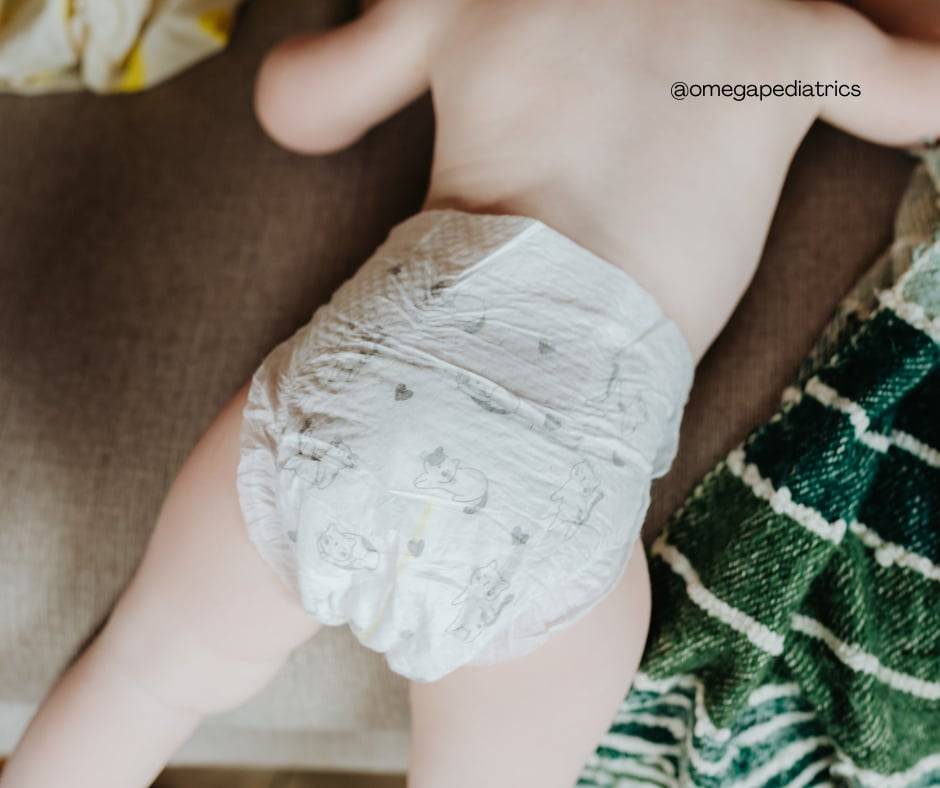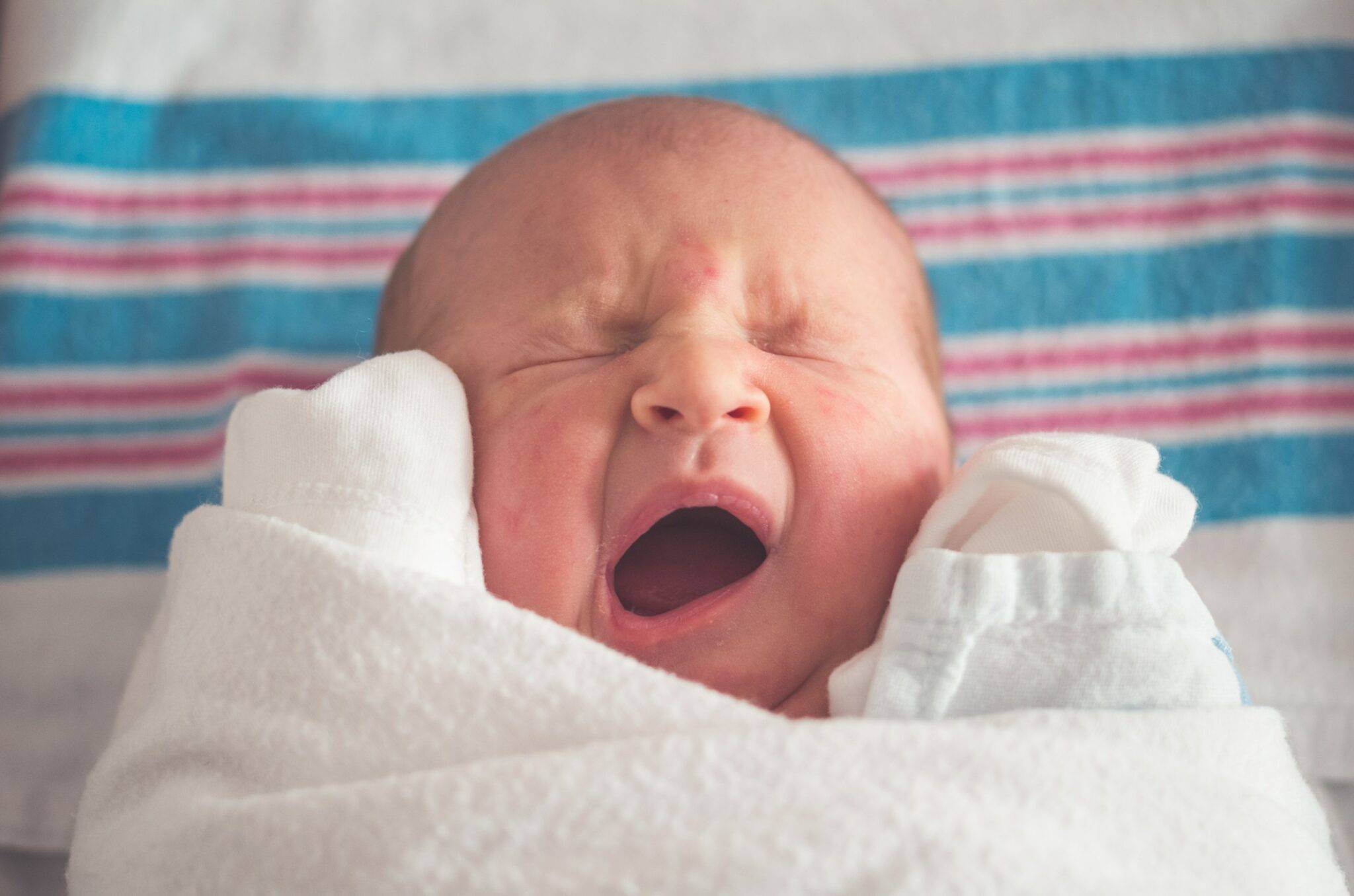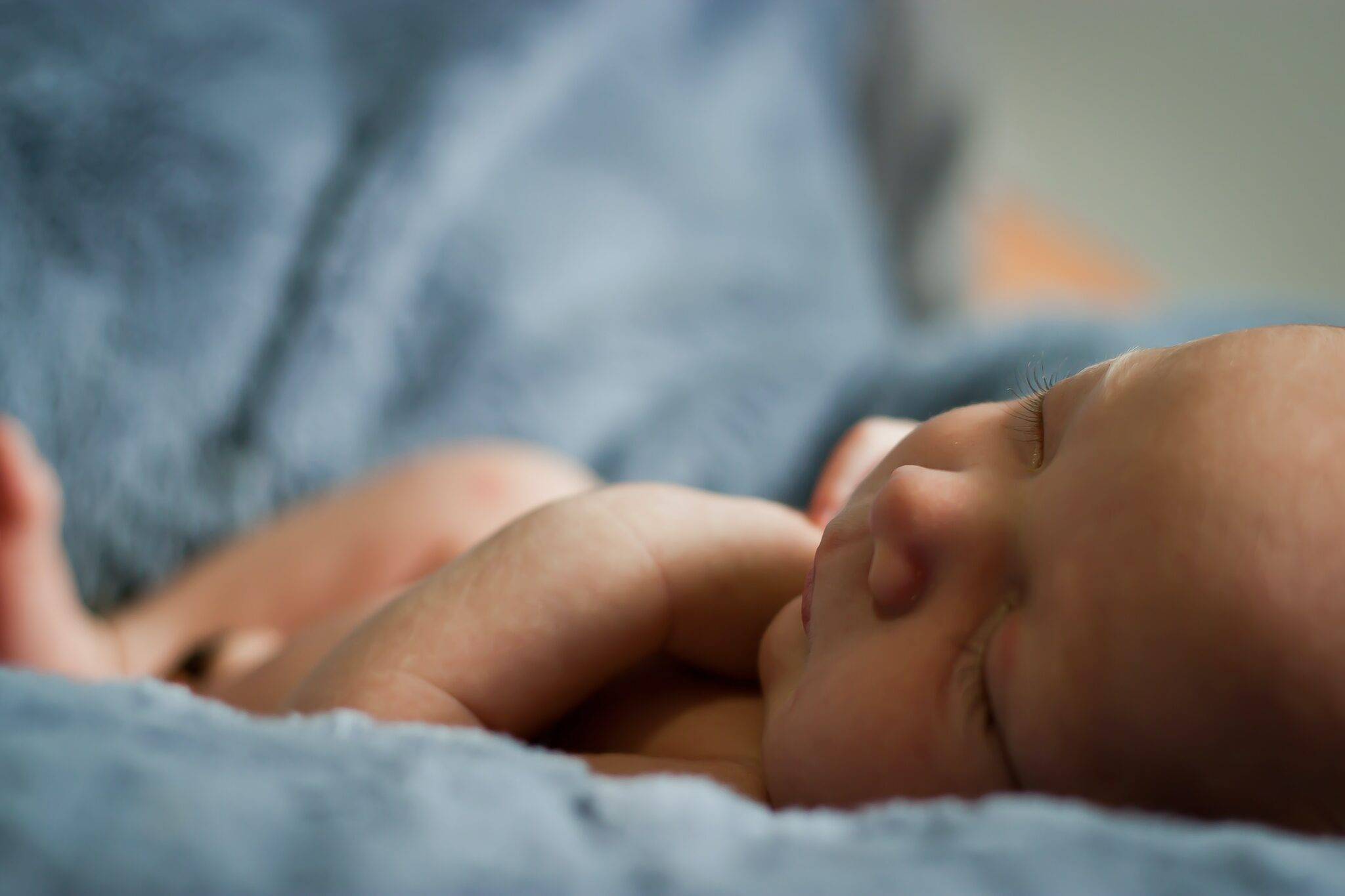What Is Diaper Rash?
Diaper rash is one of the first things new mothers experience with their newborns that requires intervention from a healthcare professional after going home with their bundle of joy. The old school providers call it nappy rash and the medical terminology is napkin or diaper dermatitis. It is very common for infants and toddlers and accounts for between ten and twenty percent of the complaints that we see in children under 2 years of age. As the name suggests, it occurs around the areas that the diaper covers – the diaper area.
The appearance of diaper rashes varies widely and so does the range of causes. There is also a healthy overlap of how these rashes look and so some expertise is often needed to make the diagnosis. The skin changes could range from mild inflammatory reactions of the skin in the diaper area to extensive erosion of the perianal skin. The rash color may be pink, red or same color as the infant’s skin. In very severe forms, there could be crater-like ulcers exposing a raw area of flesh.
Of course, the more severe forms are more of a rarity. More often one would encounter small spots or blotches localized to a small area. Affected babies are well-appearing and not ill-looking, especially in mild cases. Because it is usually a mild condition, treatment can be done at home, but it remains a concern for most parents and that is why we are discussing it here.
What Are the Different Types of Diaper Rash?
Diaper rash is a common concern for parents, and it can manifest in various forms. Understanding the different types can help in selecting the appropriate treatment and ensuring your baby’s comfort.
Common Types of Diaper Rash:
- Irritant Dermatitis:
- This type occurs when the skin is exposed to irritants such as urine, feces, or the chemicals in certain diapers and wipes. Moisture can exacerbate the irritation, leading to redness and discomfort.
- Yeast Diaper Rash:
- Caused by an overgrowth of the fungus Candida, this rash often follows a course of antibiotics. It appears as red, inflamed patches and can spread to other areas if not treated promptly.
- Bacterial Diaper Rash:
- Staphylococcus or Streptococcus bacteria can cause this type of rash. It might present with pus-filled blisters or sores and often requires medical intervention with antibiotics.
- Allergic Reactions:
- Certain babies may develop rashes due to an allergic reaction to diapers, wipes, or laundry detergents. This type of rash is usually distinguished by its appearance and the presence of hives or welts.
Understanding the specific type of diaper rash your baby has is crucial for effective treatment. Always consult with a healthcare professional for a proper diagnosis and treatment plan.
Causes of Diaper Rash – the perfect storm
The leading cause of diaper rash is irritation and dampness to the skin. The dampness is understandable, as a result of the constant contact that ensues when a child sits in a wet or stool-soiled diaper for a prolonged period. Chemicals from urine and feces irritate the wet skin, thus putting the top layer of the skin under chemical pressure. Eventually, the skin breaks out and the rash develops. This happens when the baby’s diaper is not changed frequently (as can happen with an exhausted mother, an inexperienced caregiver or a very busy daycare center where diapers are changed on the clock instead of as needed with periodic checks).
Diaper manufacturers do a good job of marketing their products but it only takes one diaper change to know that the diaper can not absorb and keep unlimited amounts of urine away from the skin. Also with stool, there is no absorption and it has to be changed as it happens. Failure to do this results in some of the more nasty rashes that we see. The child’s delicate skin when exposed to urine and feces suffers! The urine and feces once outside the body generate a chemical known as ammonia leading to irritation of the skin (Morris, 2012).
A fungal infection can also cause diaper rash. If your child’s skin is warm and wet it becomes very favorable for the growth of a fungus known as Candida. Just like ammonia, Candida can also irritate your child’s delicate skin. A diaper rash may start up being caused by ammonia irritation and then it is further complicated by a fungal infection.
The third cause of diaper rash can be linked to changing food and diarrhea. Some infants develop loose stools when a new food is introduced to their diet. With diarrhea, which is frequent loose stools, the wetness becomes even more frequent and this can also lead to the development of a diaper rash.
There are some studies that have linked diaper rash to antibiotics in breastfeeding mothers. Some breastfed babies can develop diaper rash in response to what the mother ate especially if the mother is on antibiotics that result in diarrhea in the child. The suggested mechanism is that the child may have ingested some of the antibiotics from the maternal secretion of her antibiotics in breast milk and then the child suffers antibiotic-associated diarrhea and this leads to diaper rash.
It has also been reported that some breastfed babies may develop diaper rash when they are weaned from breast milk to infant formula ( Gozen et al., 2014).

Symptoms – check the name, duh!
I say this tongue-in-cheek, but yes, diaper rash symptoms appear to be rash in the diaper area. A facial rash is not a diaper rash and a diaper rash is not a facial rash. So yes there is a rash. However, all rashes are not created equal. Other symptoms will depend on how severe the rash is but in most cases, the symptoms are mild. In the early stages, your baby’s diaper area will start looking more reddened or pink and within a space of another diaper change, you may notice some spots or blotches around the area. Apart from the rash, the baby should appear healthy with no systemic symptoms like a fever.
It is not uncommon for an infant to go to daycare with a perfectly normal diaper area and come home with a very nasty diaper rash after 10 hours. In severe cases, the infant is usually very distressed due to advanced and painful symptoms that include increased redness, cracked or broken skin, blisters and ulcers. The rash will spread and cover the entire diaper area, thighs and sometimes up to the abdomen.
Treatment of Diaper Rash
As I have mentioned above, most are mild and do not require admission to the hospital or an emergency room visit. Your baby’s Provider will focus on the healing of the ulcerated skin, and prevention of reoccurrence. Sometimes we prescribe a barrier cream be applied on the infant’s skin after each diaper change. The diaper should be changed frequently to prevent reoccurrence. If the infant is in daycare, a discussion with the more senior members of the care team there would help. That way they can ensure prompt checks and diaper changes. The diaper brand may need to be changed to control the source of exposure because though no diaper brand is perfect, not all diapers are created equal.
Other strategies include leaving the diaper off for as long as possible, using only water or alcohol-free baby wipes, avoiding soap, bubble baths, and lotions and avoiding the use tight-fitting plastic pants. Occasionally, the provider may be of the opinion that there is a fungal superinfection or that the rash is due to candida. In such a case, the child will be prescribed a topical antifungal agent and this usually clears up the rash quickly.
Take the baby to the clinic if the rash is not healing or appears different even after treating it at home. Also if the rash is draining fluid, or you notice white patches that itch or seem to have fluid in it or if your baby is running a fever or cries during urination. These may be indicators that there is a secondary problem that the provider needs to address.
What has been your experience with diaper rash? What did you do?
Reference
Gozen, D., Caglar, S., Bayraktar, S., & Atici, F. (2014). Diaper dermatitis care of newborns human breast milk or barrier cream. Journal Of Clinical Nursing, 23(3/4), 515-523. doi:10.1111/jocn.12047
Morris, H.,R.G.N.S.C.M. (2012). Getting to the bottom of nappy rash. Community Practitioner, 85(11), 37-8. Retrieved from http://search.proquest.com.ezp.waldenulibrary.org/docview/1150212146?accountid=14872
Comment below or on our Facebook Page. Please share this article.
Omega Pediatrics Difference: At Omega Pediatrics in Roswell, Georgia we understand the challenges that parents face when their children develop symptoms late in the day or after hours. Many pediatric offices are closed after 4 pm however we are open every weekday up to 9 pm for walk-ins and we have telemedicine via evisits for our known patients. Our clinic is one of the easily accessible pediatric primary care clinics in Roswell and Alpharetta. We provide pediatric primary care to families in the North Fulton area and we have families that live in Sandy Springs, Johns Creek, Duluth and Cumming.
Immunizations after-hours: One advantage of switching to Omega Pediatrics for your child’s primary care is that you can bring your child in for immunization after regular business hours. We provide this service because we have the passion for what we do and we want to be a comfortable and convenient service, not the ordinary pediatric doctor’s office.
Book an appointment online here.
How Does Breast Milk Compare to Barrier Creams in Treating Diaper Rash?
Breast milk has long been touted for its natural healing properties, but how does it stack up against barrier creams when it comes to treating diaper rash
Effectiveness of Breast Milk
A 2013 study revealed that breast milk could be as effective as using 1% topical hydrocortisone for treating diaper rash caused by dermatitis. This suggests that breast milk has some potential in soothing and treating inflamed skin.
Comparing Results from Later Studies
However, a different study conducted in 2014 provided contrasting results. This research indicated that barrier creams outperformed breast milk in treating diaper rash. Specifically, the barrier creams were more effective in reducing symptoms and promoting skin healing compared to breast milk.
Key Takeaways
Breast Milk: Can potentially soothe and treat diaper rash, comparable to hydrocortisone in some cases.
Barrier Creams: Proven to generally offer better results, reducing symptoms and accelerating healing more effectively than breast milk.
What Are the Symptoms of a Bacterial Diaper Rash?
Bacterial diaper rash can be distressing for both infants and parents. Identifying the symptoms early can help manage and treat the condition effectively.
Here are several symptoms to look out for:
Red, Inflamed Skin: The skin in the diaper area may appear bright red and feel warm to the touch.
Yellowish Crusts: You might notice yellow crusts forming around the affected areas.
Pimples and Blisters: Small pimples or blisters may develop, often filled with fluid.
Sores and Ulcers: In severe cases, sores or ulcers may appear, causing discomfort.
Discharge: There may be drainage or oozing from inflamed areas, which could indicate infection.
If you observe any of these symptoms, consult a healthcare professional for appropriate treatment options.
What Are the Symptoms of a Yeast Diaper Rash?
Yeast diaper rashes are a common issue that can affect infants. The primary symptoms to look out for include
Red Bumps: Noticeable red bumps will appear on the skin.
Location: These bumps typically form in the warmest and most humid areas, such as the creases on either side of the genital area where the legs join the body.
Clusters and Spread: The rash often manifests in clusters rather than isolated spots and can spread to other areas if left untreated.
Persistent Irritation: Unlike regular diaper rashes, yeast rashes can persist despite usual diaper rash treatments and may require antifungal creams for relief.
Identifying these signs early can help in effectively managing and treating a yeast diaper rash.



